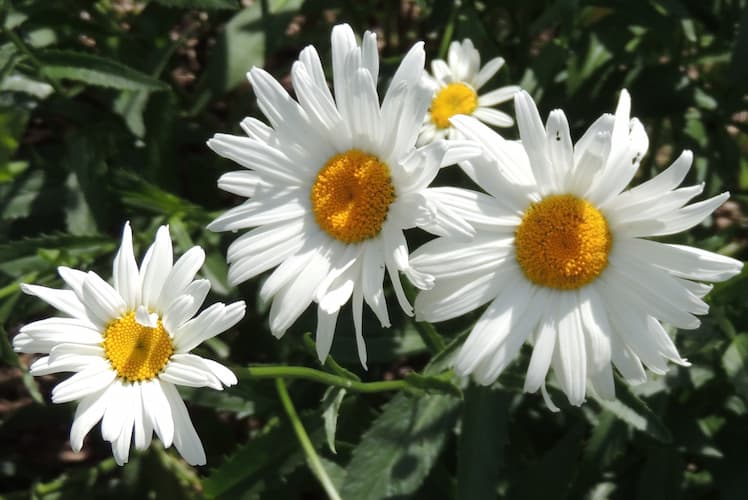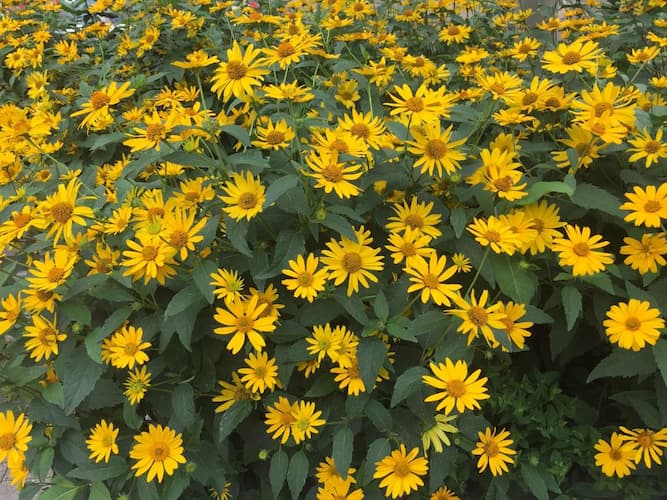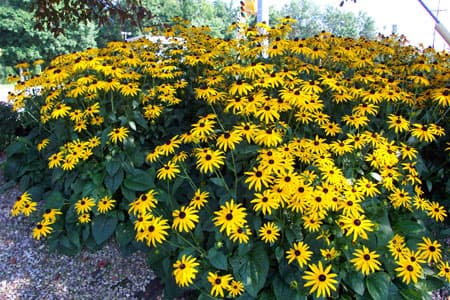How to Grow Daisies Perennial Flowers

About Growing Daisy Flowers in Your Home Garden
Growing Daisy flowers is easy. Low-maintenance perennial daisies brighten up the flower garden wherever they are placed. And they look great in indoor vases and floral arrangements. As cut flowers, they are long-lasting, too. Take your pick! There are dozens of cheerful varieties to choose from. They are among the most popular flowers of both gardeners and homeowners, to decorate the yard with continuous, long-lasting blooms. And they are perfect for beginning gardeners and those whose thumb has not yet turned green!
We consider these flowers among the best for kids and beginners.
Also, the flowers grow well in flowerpots on your patio or deck.
Flowers Bloom: Summer to Fall
Plant Height: from just 6 inches to 3 feet, depending upon variety.
Annuals and Perennials, Chrysanthemum maximum (Asteraceae)
Common Varieties of Daisies
Shasta Daisy – perhaps the most popular, a perennial
Gloriosa Daisies – They are daisy-like. But, they are not daisies.
Painted Daisy
African Daisy (an Annual)
Pyrethrum Daisies
Many, many other varieties

Perennial Daisy Flower Propagation
These plants are grown from seed. Annuals will bloom in the first year. For perennials, start Daisy seeds in year one, and they will bloom the second and each following year. Daisy seeds can also be planted in late summer or early fall for flowers next year.
Also, you can start plants indoors, 6-8 weeks before the last frost date for your area.
Days to Germination: 10 – 21 days, depending upon the variety.
Plants can also be propagated, division. Dig up plants, separate them into clumps, and re-plant the clumps.
Plant Spacing: Plant daises 14 inches apart. This may seem a bit too much for a plant that looks its best in groups. But, it won’t be long before these quickly spreading plants fill in all of the gaps.

How to Grow Daisies
Daisies are among the easiest plants to grow. Established plants need very little attention during the year.
The plants grow best in rich, well-drained soil and full sunshine. But, they are a hardy and forgiving plant. They will readily tolerate poorer soils and partial shade.
Apply a general-purpose fertilizer in the early growth stage. It helps the plants to develop big and strong stalks and leaves. Just before blooming, provide a fertilizer high in Phosphorous, to help promote big, bright blooms.
Staking plants is sometimes required, especially if grown in partial shade.
Deadhead spent flowers to promote continuous blooms. After the initial bloom, cut the plants back several inches. This will remove unsightly dead blooms and encourage a second blooming.
After the first frost in your area, cut the plants down to ground level. They do not need mulching for winter protection.
Did You Know? Daisies can be found growing on every continent in the world, except Antarctica.
Days to Germination: 10 – 21 days, depending upon the variety
Ideal Soil pH: 6.0 – 8.0.
Also, see:
Plant Problems – Identify the causes and find the cures.
Insects and Plant Disease
Daisies seldom are bothered by insects and disease. Generally, these plants do not need insecticides or fungicides.
If insect or disease problems occur, treat them early with insecticidal soap and /or fungicide.
Related Articles
People who read this article will also like:
How to grow Daisies – by Garden Hobbies
Deadheading Spent Blooms – Deadheading encourages some plants to produce new blooms. And, it gives a neat and tidy plant appearance.
Please support our site. Shop for:
- rmmatthews100@hotmail.com
- 585-721-6528
- Rochester, NY
©1999-2024 GardenersNet.Com, All Rights Reserved

